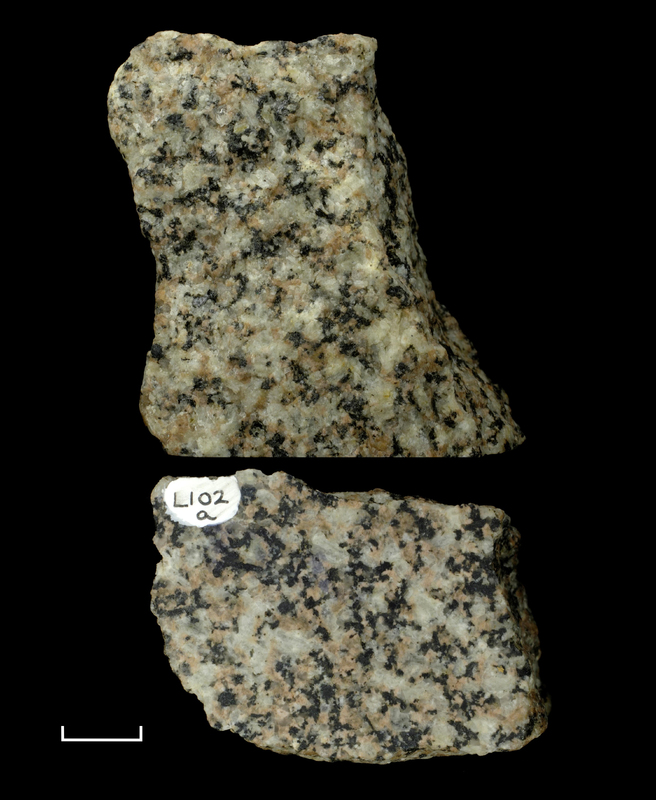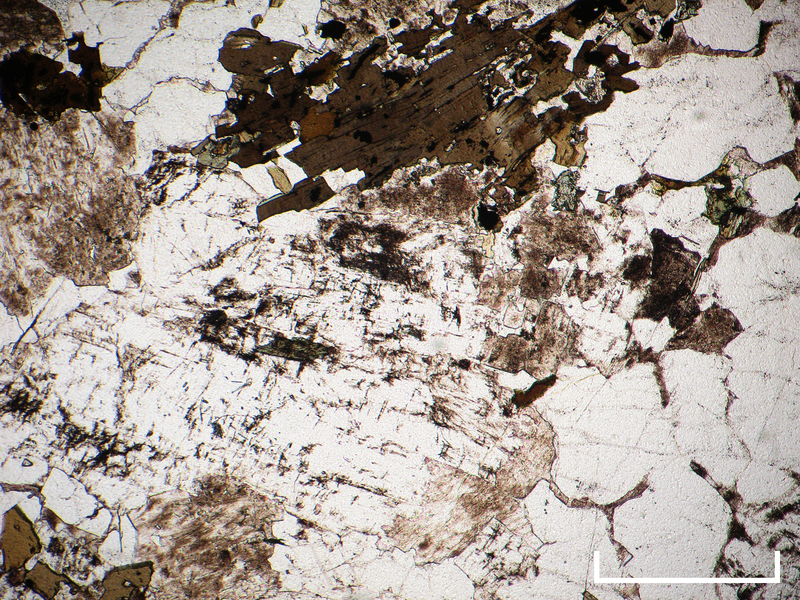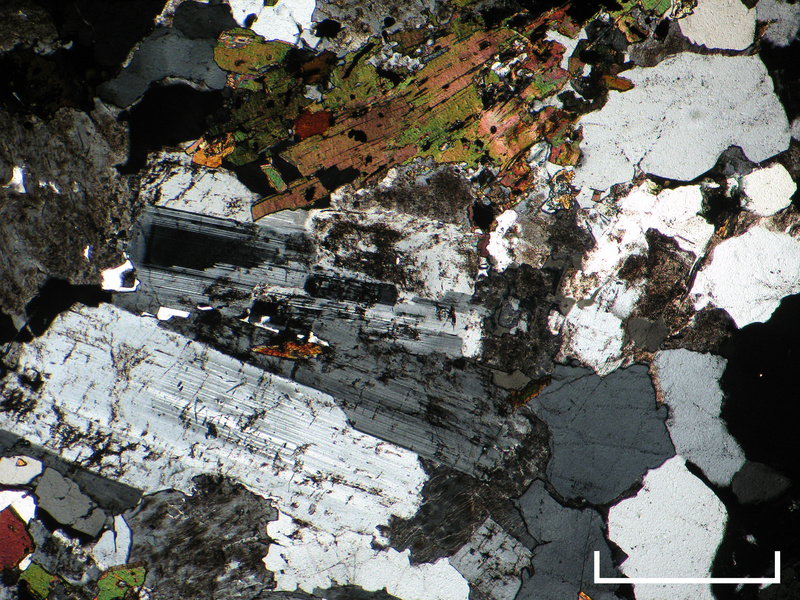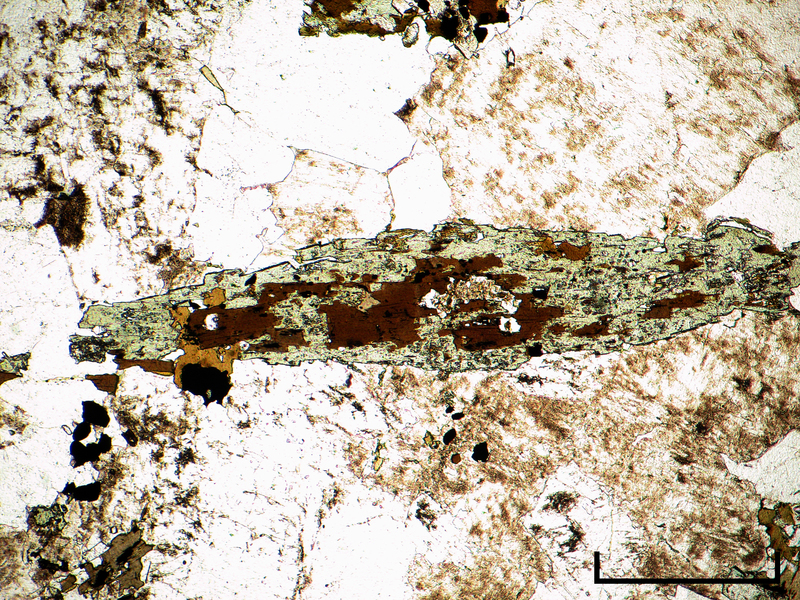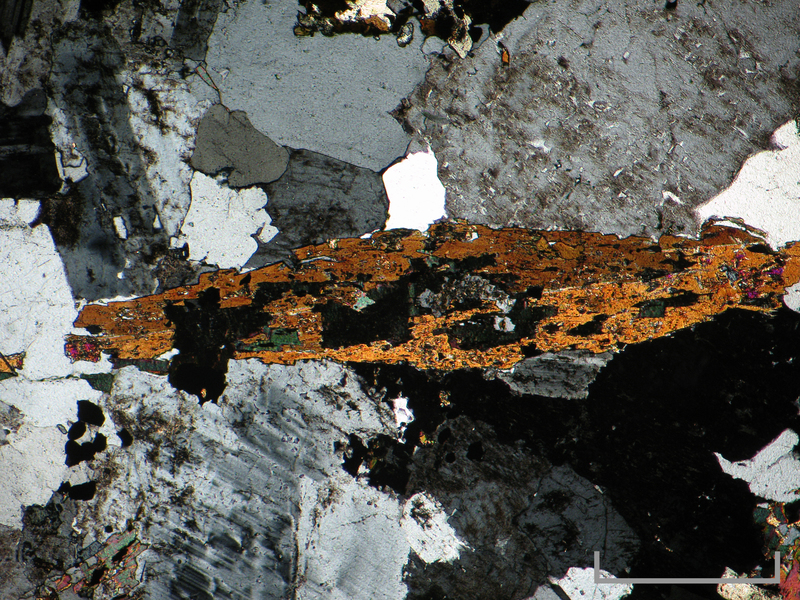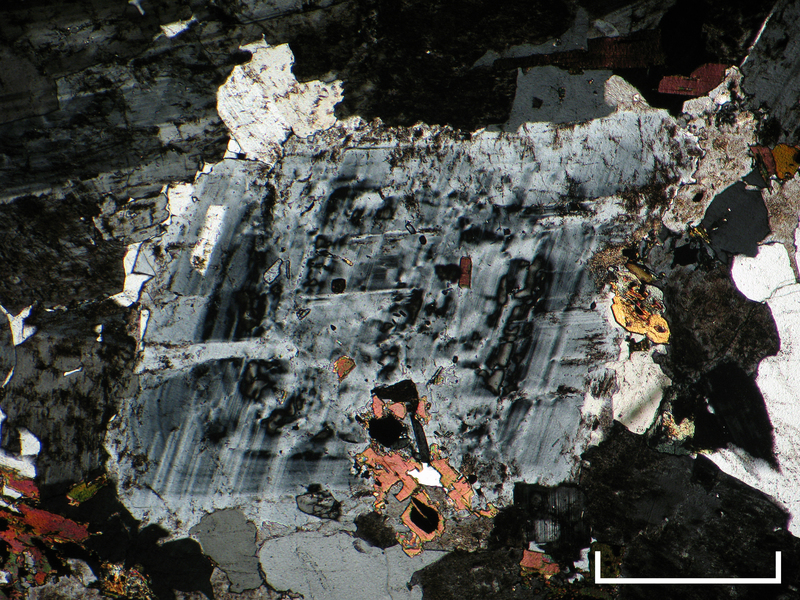- Home
- Rocks
- Type fossils
- Fossil Specimens
- Minerals
- Glossary
- Stratigraphic Chart
- Michel-Levy Chart
- Classification of igneous rocks
- University of Cambridge
- Department of Earth Sciences
- ESC Library
- Moodle
- Sedgwick Museum
- DoITPoMS
- Mindat.org
- Microfossils
- Bryozoans
- Webmineral
- Tree of Life
- CrystalMaker
- Virtual Microscope
L102 Hornblende biotite granite
Title
L102
Hornblende biotite granite
Subject
Age
Caledonian, Devonian
Location
Glencoe
Description
Hand Specimen
Medium to coarse-grained rock with a granular texture.
White feldspar laths 2-4 mm long are clearly visible.
Other phases: pink feldspar, black biotite mica, black hornblende amphibole and pale grey quartz. These grains are more equant, typically 1-2 mm across.
Biotite may be distinguished from hornblende by its flaky habit and one good cleavage. It is shinier than hornblende.
Thin-section
Plagioclase feldspar
- The larger laths (2-4 mm long) are strongly zoned. The cores of these laths, which display clear lamellar twinning, have been overgrown by rims of more feldspar. Some alteration to white mica.
Biotite mica
- Grains typically 1 mm across. Strongly pleochroic in reddish brown and pale straw. Often associated with small grains of an opaque accessory mineral, probably magnetite.
- Grains are 1-2 mm across, anhedral, and display undulose extinction.
Alkali feldspar
- Anhedral grains up to 5mm long. Some alteration to white mica. Some grains display a microperthite texture.
Hornblende amphibole
- Pale green, anhedral. Grains appear to have been “eaten away”, reducing their prismatic form (diamond) to a ragged anhedral form. Amphiboles have two cleavage planes which intersect at 56°.
Rock History
This coarse-grained rock must have cooled slowly as part of an intrusion.
Its granitic composition (essential quartz and feldspar) indicates that it was produced in a continental setting.
Strongly zoned plagioclase crystals and “eaten away” appearance of the hornblende could be due to a change in the composition of the liquid from which the phases crystallised; perhaps due to magma mixing or degassing of volatiles from the magma.
Presence of hornblende and biotite indicate that this is a wet granite, probably from a subduction zone.
Hydrothermal alteration of feldspars to white mica.
Its granitic composition (essential quartz and feldspar) indicates that it was produced in a continental setting.
Strongly zoned plagioclase crystals and “eaten away” appearance of the hornblende could be due to a change in the composition of the liquid from which the phases crystallised; perhaps due to magma mixing or degassing of volatiles from the magma.
Presence of hornblende and biotite indicate that this is a wet granite, probably from a subduction zone.
Hydrothermal alteration of feldspars to white mica.
Advanced Notes
This rock is classified as an adamellite because it contains roughly equal proportions of alkali feldspar and plagioclase feldspar, with additional quartz and biotite.
Rock Name
hornblende biotite granite
adamellite
Citation
“L102
Hornblende biotite granite,” 1A Collections, accessed April 9, 2024, https://wserv3.esc.cam.ac.uk/p1acollections/items/show/4.
Hornblende biotite granite,” 1A Collections, accessed April 9, 2024, https://wserv3.esc.cam.ac.uk/p1acollections/items/show/4.

